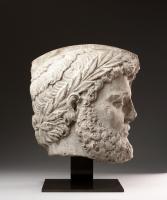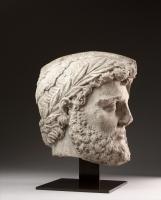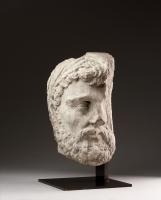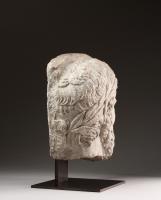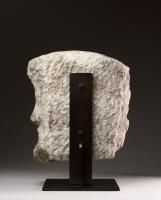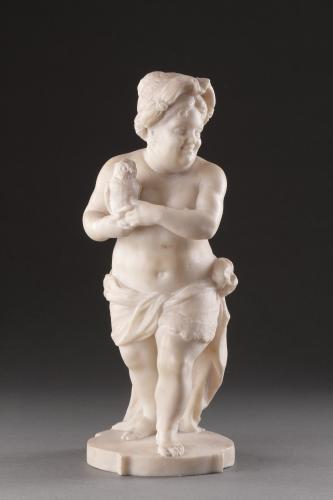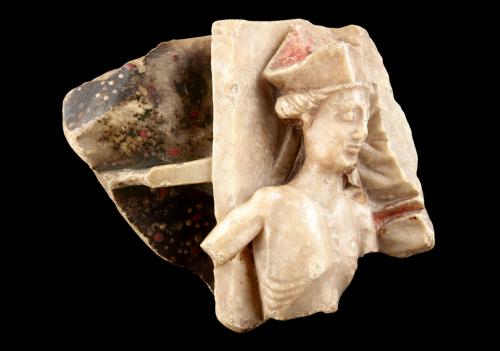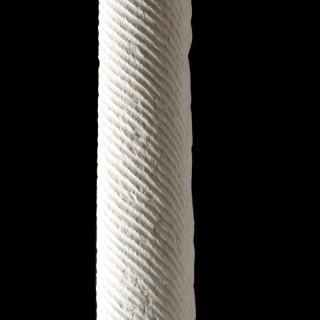
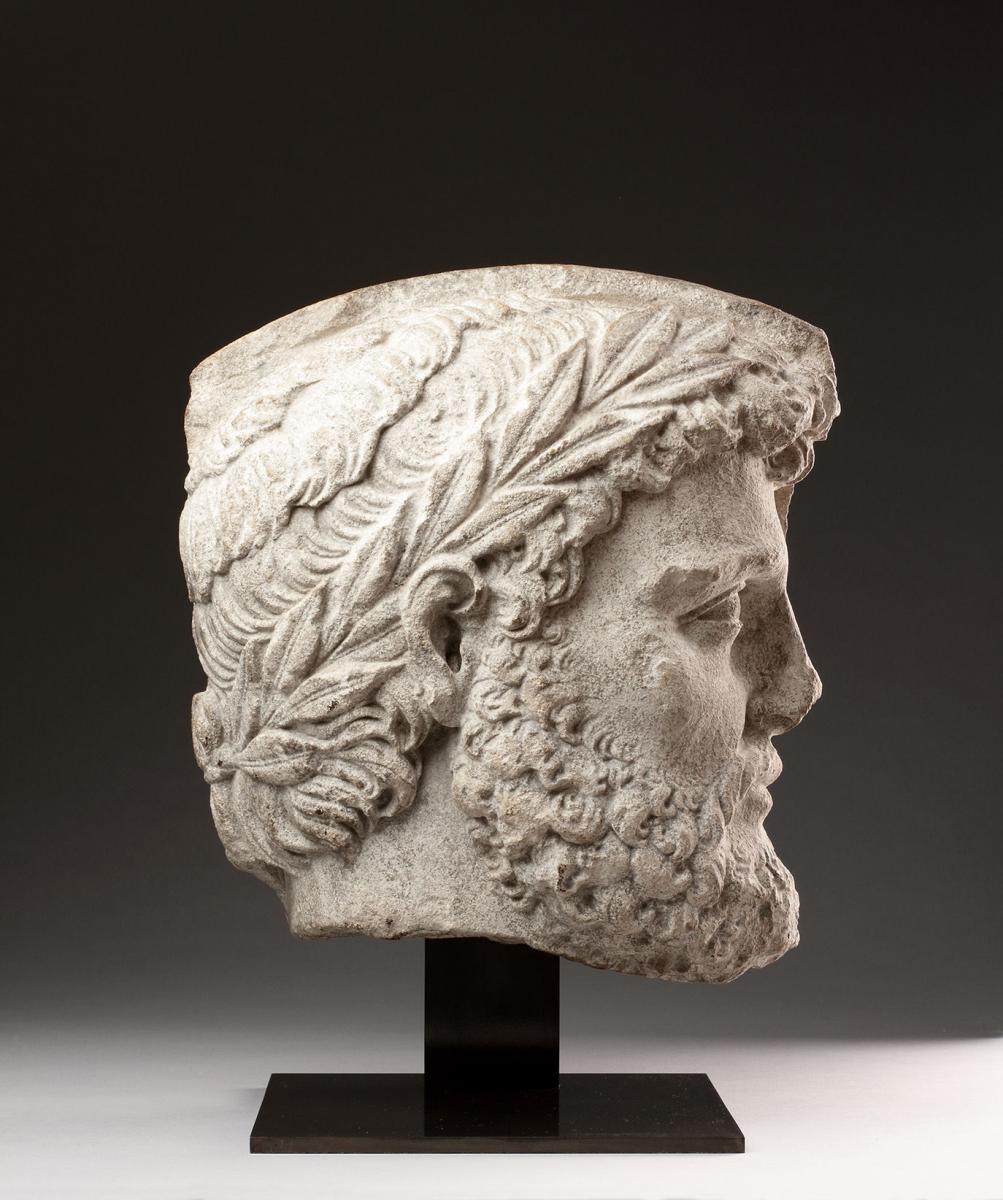
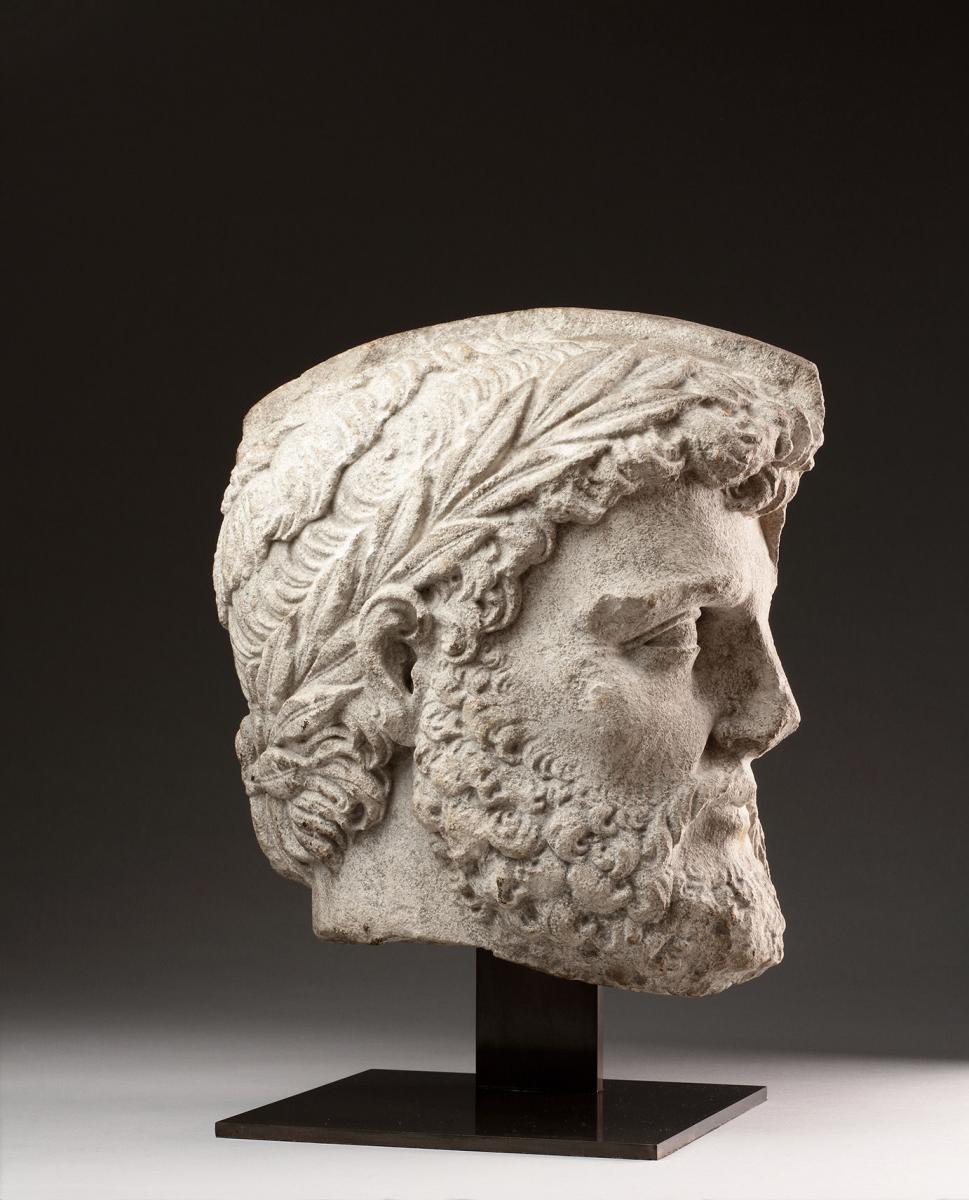
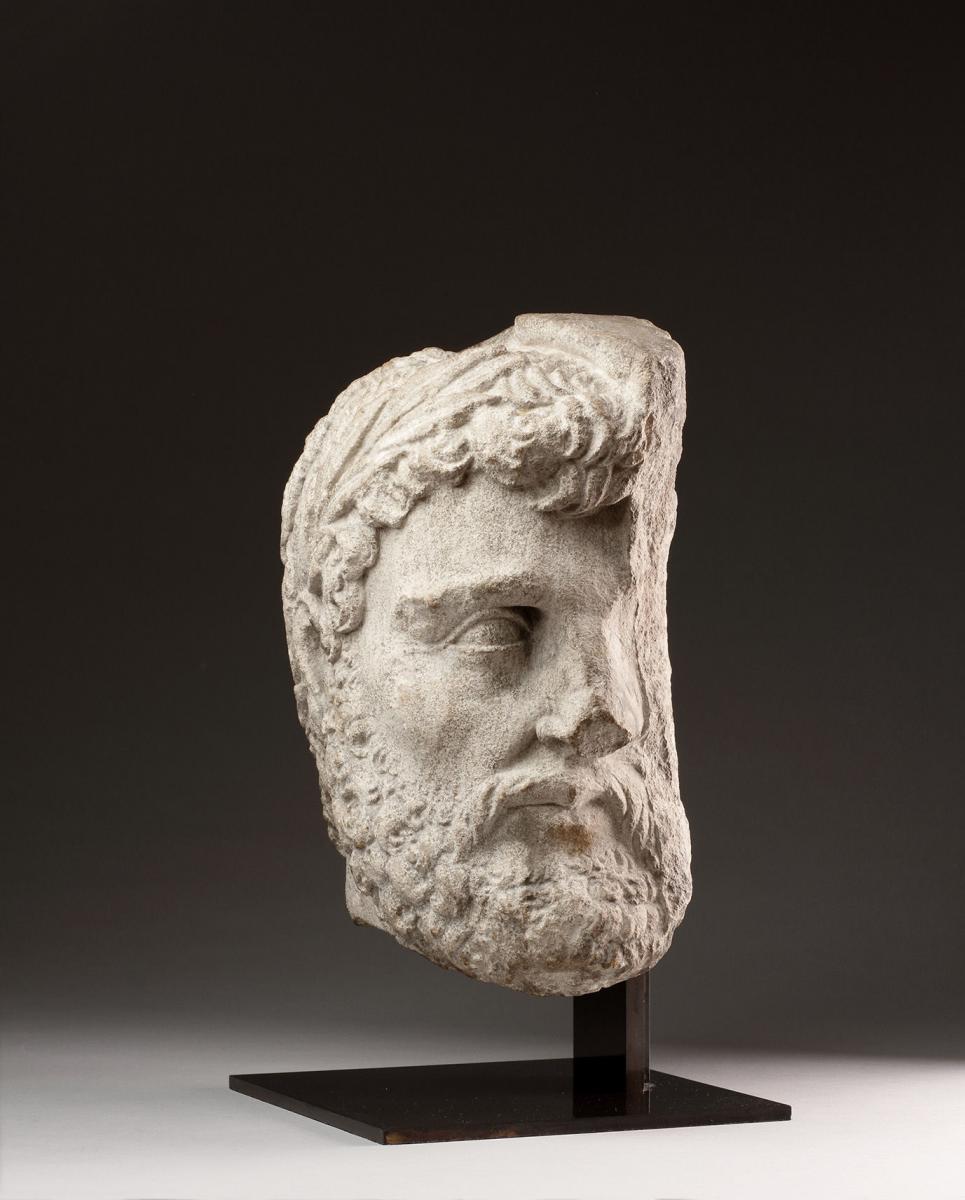
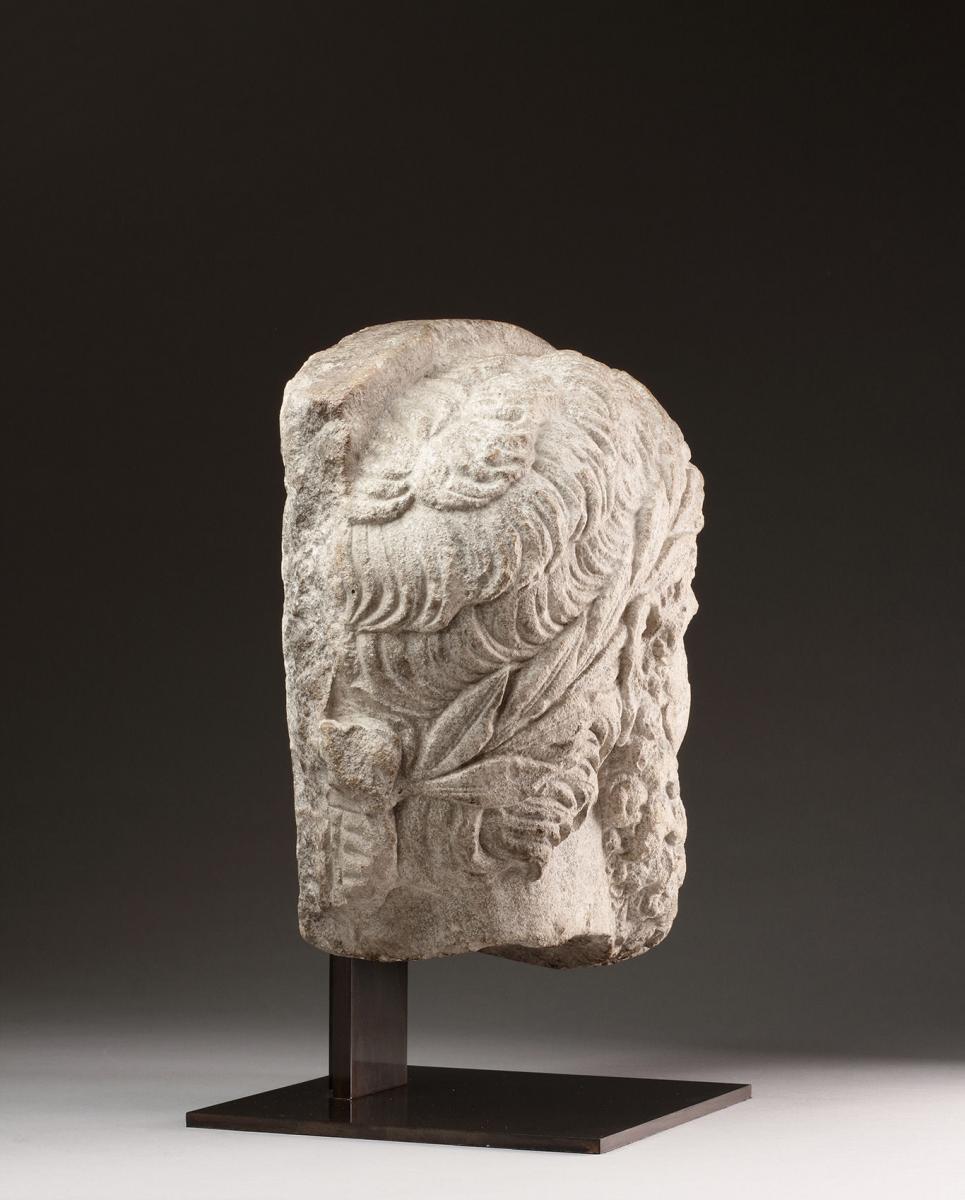
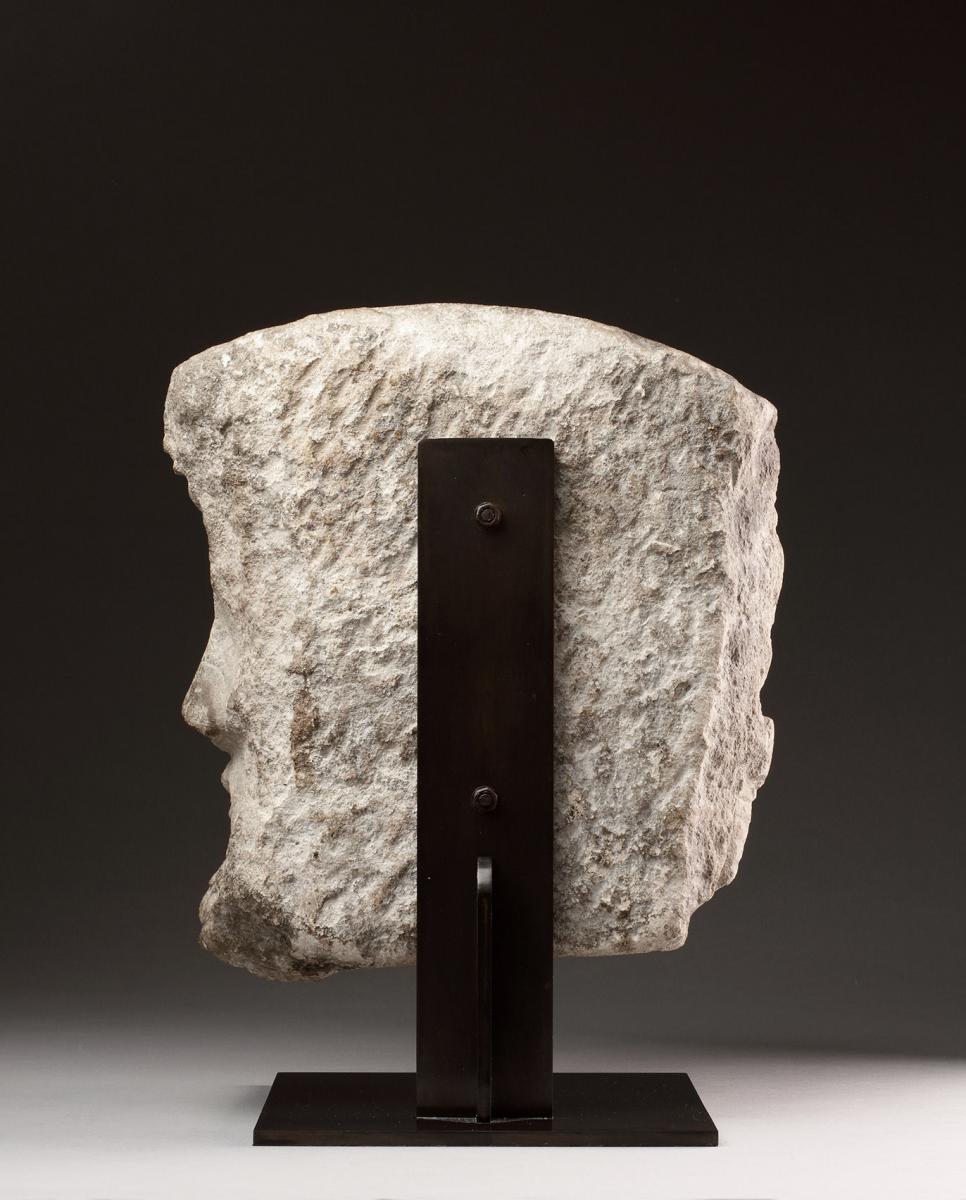
This object is eligible for a Certificate of BADA Provenance
The BADA Standard
- Since 1918, BADA has been the leading association for the antiques and fine art trade
- Members are elected for their knowledge, integrity and quality of stock
- Our clients are protected by BADA’s code of conduct
- Our dealers’ membership is reviewed and renewed annually
- Bada.org is a non-profit site: clients deal directly with members and they pay no hidden fees
A Florentine Renaissance Carved Limestone Architectural Relief Fragment Depicting a Hadrianic Head Wearing a Crown of Laurel Leaves ‘All´Antica’.
Late 16th Century.
Size: 31cm high, 26cm wide, 14cm deep - 12¼ ins high, 10¼ ins wide, 5½ ins deep / 38cm high - 15 ins high (with base).
Provenance:
Sold at a Country House auction 1960s.
Acquired from Colefax and Fowler early 1960s.
Ex Private English collection.
Hadrian (117 - 138 AD) Roman Emperor was a restless and ambitious man who was interested in architecture and who was passionate about Greece and Greek culture.
Born into the Spanish elite he was adopted by the Emperor Trajan, his father’s cousin, and became his successor. As a ruler he consolidated and strengthened the empire rather than continuing Trajan’s campaigns.
However, he was not the benevolent, cultured intellectual often portrayed, he was an experienced military leader and strategist who was on occasion breathtakingly ruthless.
This suited the renaissance Florentine fascination with brutal combat and victory at all costs.
The image of the warrior as hero in a figurative style together with classical and mythological themes was fashionable among patrician Florentine patrons.
Architectural friezes and reliefs were produced in imitation of antiquity recalling the scenes on ancient sarcophagi. A sketch book known as the ‘Codex Escurialensis’ contains drawings of the reliefs on ancient monuments such as the Arch of Constantine and Trajan’s column and this was used as a pattern book for both artists and architects.
Many masons took antique relief sculpture as a source of compositional and figurative inspiration as well as an ideal with which to compete.
In the artists sketchbooks the theme of combat often underpinned a vigorous, and often explicitly violet, ideal that predominated in the decorative imagery on Florentine public buildings.
Dimensions
31cm high, 26cm wide, 14cm deepStock number
23The BADA Standard
- Since 1918, BADA has been the leading association for the antiques and fine art trade
- Members are elected for their knowledge, integrity and quality of stock
- Our clients are protected by BADA’s code of conduct
- Our dealers’ membership is reviewed and renewed annually
- Bada.org is a non-profit site: clients deal directly with members and they pay no hidden fees


